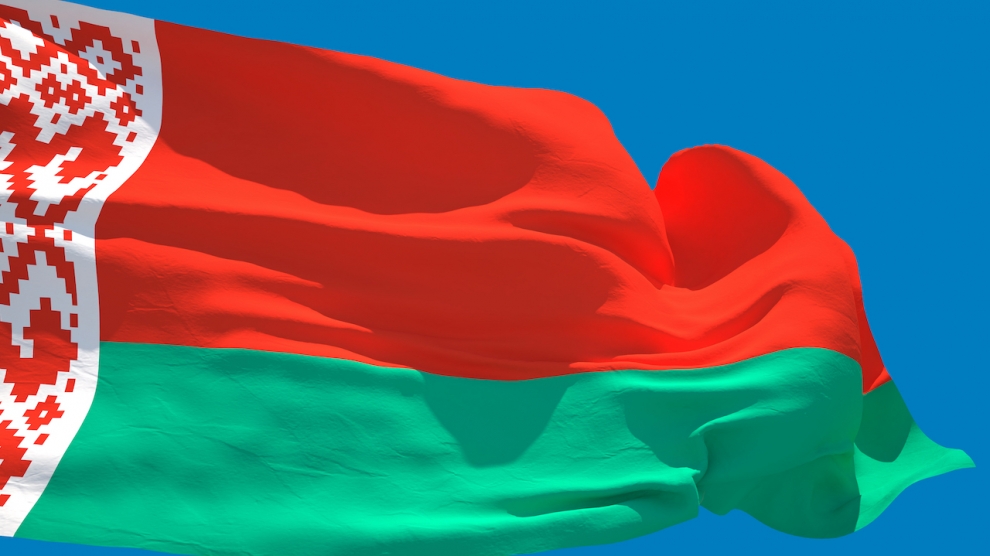On September 11, Belarus is holding a parliamentary election. The EU will need to respond to this vote in a carefully calibrated manner. While the union is presently focused on other priorities, Belarus presents important geostrategic challenges that will test the EU’s ostensibly new European Neighbourhood Policy (ENP) and its global strategy.
Less than a year ago, in October 2015, Belarus held a presidential election. Although the Organisation for Security and Cooperation in Europe (OSCE) gave a largely negative assessment of the conditions under which the ballot was held, the EU has since inched toward deeper engagement with Minsk.
In 2016, the EU has lifted almost all sanctions against Belarus and dialogue has become more intensive and multifaceted, including on human rights. Yet the current rapprochement does not represent a sufficiently strategic or comprehensive policy.
Western officials see the parliamentary election as another test for Minsk. Some in the EU are showing impatience that Belarusian President Aleksander Lukashenko is not reciprocating the relaxation of sanctions by loosening the government’s grip on power. For his part, Lukashenko is expressing frustration that the EU is delaying tangible advances in cooperation, dismissing the union as a govorilnya, or talking shop. Suspicion and mistrust remain on both sides.
It will be important to avoid the dramatic breakdown of relations that occurred after the presidential election in December 2010, when after a period of rapprochement EU-Belarusian relations stalled overnight as a result of a brutal crackdown on demonstrators.
This time around, both the Belarusian authorities and the opposition have said they want to avoid anything similar. The political opposition and NGO community have signaled little appetite for postelection protests. At the same time, the election will not be free and fair, and the vote is unlikely to win a particularly positive assessment from OSCE monitors. Belarus has implemented only a few of the 30 recommendations made by the OSCE after the presidential election last October.
Both Belarus and the EU want to deepen the current rapprochement. As long as no major crackdown or violence occurs, the two sides will be looking for new ideas and milestones to invest their relations with greater substance. The two big items on the bilateral agenda are visa liberalization for Belarusians traveling to EU countries and talks about a political agreement. Belarus remains the only country in the Eastern Partnership, which covers six of the union’s Eastern neighbors, without a contractual agreement with the EU.
While these steps may well be merited, EU-Belarusian relations need a longer-term and realistic strategic vision. A reality check is required to manage expectations on both sides. Moreover, the delicate geopolitical context and Belarus’s domestic situation make this one of the first and thorniest test cases for building “resilience”—the concept that the EU’s June 2016 global strategy suggests will now define EU foreign policy in the neighborhood.
On the one hand, the EU needs to understand the multiple geostrategic threats to Belarus’s resilience and think how it can help the country minimize these fragilities. This means tackling the country’s vulnerability to Russian geostrategic aims in a regional context that has been fraught since Moscow’s March 2014 annexation of Crimea. The EU (together with NATO) will need to offer more meaningful bilateral confidence-building measures in the security sphere and help Belarus develop its desired role as a regional neutral ground for peace and security negotiations.
On the other hand, Belarus is an example of how state resilience, regime resilience, and societal resilience do not necessarily go hand in hand. This is a mismatch the global strategy skates over and will need to address as the document moves into its implementation phase.
In concrete terms, this will entail getting a grip on Belarus’s evolving domestic context. The EU rapprochement with Belarus must include a recalibrated effort to advance civil society and freedoms. The EU has traditionally dealt mainly with a familiar circle of opposition leaders. As the current election campaign has confirmed, these leaders are now relatively marginal to everyday civil society activity. In the eyes of many young Belarusians, the EU has become too closely associated with the personal political agendas of these opposition leaders, and this has undercut the union’s ability to reach out to newly organizing layers of society.
The domestic context has changed, as a focus on building and defending national identity and autonomy has come to the fore—a result of Russian actions in Ukraine. Most Belarusians are now cooler toward the prospect of any sharp political rupture, as they fear this would weaken the country vis-à-vis Russia. But the EU should not take this to mean there is no need to support alternative voices in civil society. After the election, this needs to be a more prominent part of the EU’s support for resilience.
The EU should do this by paying closer attention to incipient civic initiatives that include diverse population groups across the whole country. Many of these are organized around the aim of national resilience and independence, in a significant interlinking of domestic change and geopolitical factors.
The global strategy’s promise of “principled pragmatism” is the right approach toward Belarus. However, Sunday’s election is likely to reveal how much work remains for the EU to clarify what its new ENP and global strategy mean in practice for a strategically complex case like Belarus. In particular, the union will need to show how it intends to deal with the interactions between the principled and the pragmatic parts of this equation. Only by developing a much broader form of engagement that matches ongoing societal changes in Belarus will the EU begin to show that resilience could be more than a soon-to-be-forgotten and hollow slogan.
The article was originally published by Carnegie Europe.
_______________
The views expressed in this opinion editorial are the author’s own and do not necessarily reflect Emerging Europe’s editorial policy.


Add Comment